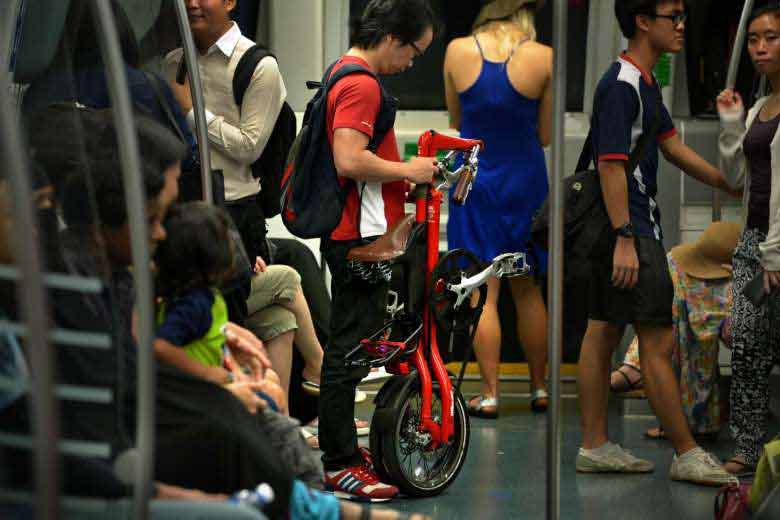SINGAPORE – A six-month trial that will allow commuters to bring foldable bicycles and personal mobility devices (PMDs) on buses and trains at all hours, will be launched soon, in what observers say is a significant step in encouraging commuting by bicycle.
Transport Minister Khaw Boon Wan announced the upcoming pilot on Wednesday (July 20) at the Walk Cycle Ride SG Symposium, held at the Mediacorp Campus.
Currently, foldable bicycles are allowed on public transport only during off-peak hours.
“However for this trial to be a success, public transport commuters and those who bring their bicycles and PMDs onto the buses and trains need to give-and-take, and be considerate to one another,” said Mr Khaw.
He also revealed details of the bicycle-sharing scheme that will be launched in the Jurong Lake District next year.
The scheme will have about 1,000 bicycles spread across 100 docking stations, which will be within walking distance from each other. The bicycles will be available for use 24 hours a day.
A tender for an operator for the system will be called next week, said Mr Khaw.
Explaining why Singapore needed to go car-lite, Mr Khaw said city planners have come to the conclusion that the traditional car-centric city model was not sustainable.
“Cars require car parks and require roads, and both require large tracts of land. They are inefficiently used. Unlike public transport, private cars are typically used only for a very short period each day, and are left in the parking lots the rest of the time,” he said.
About 12 per cent of Singapore’s land is used for roads. In comparison, 14 per cent of land is used for housing.
In addition, cars spend only about 4 per cent of the time in motion, according to a recent study by government think-tank the Centre for Liveable Cities, and the Urban Land Institute, a US-based research organisation.
Mr Khaw also pointed out that car-lite cities tend to be more liveable than car-centric ones, where streets are designed for cars.
“In terms of urban design, pedestrians are effectively afterthoughts, compared to the car,” said Mr Khaw.

This article was first published on July 20, 2016.
Get a copy of The Straits Times or go to straitstimes.com for more stories.






